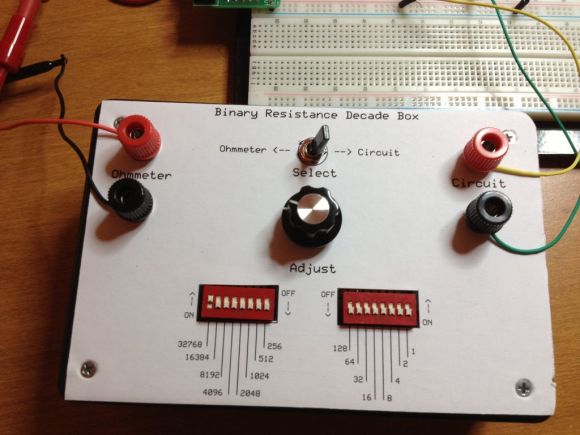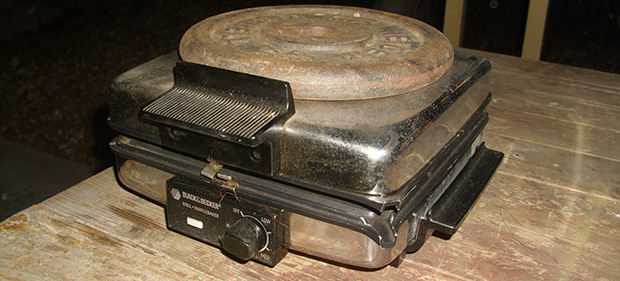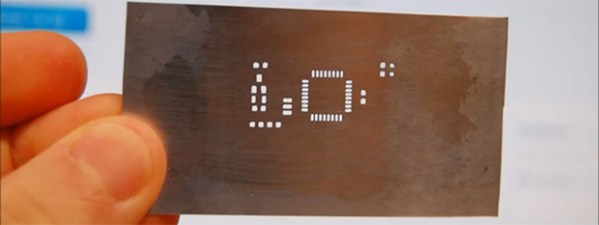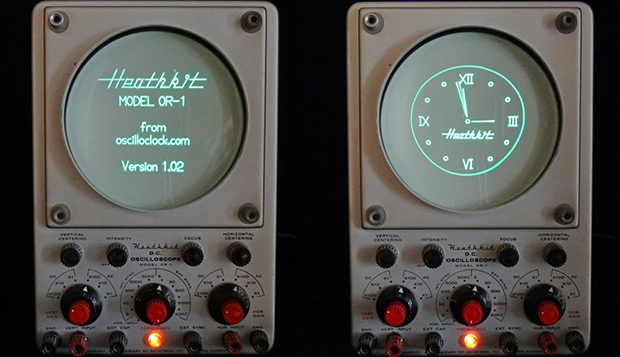
Here’s a simple piece of equipment which you’ll be proud to display on your electronics bench. It’s a resistance decade box. The concept has been around forever — it offers the ability to tune a wide range of resistance values just by adjusting the controls. We especially like the clean look of this one, and think the use of DIP switches is a nice touch.
Check out the toggle switch at the top. It lets you disconnect the resistance values from the output in order to test them with your meter. It may not seem like much, but fudging your switch settings could end up smoking your target project. The value of that feature isn’t lost on us.
The DIP switches are mounted to some Radio Shack breakout boards which work perfectly for hosting the resistors as well. This keeps the inside of the enclosure nice and tidy. The final touch is the printed face plate applied to the cover of the box.
Like we’ve said, this one is nice but our favorite is still this one that uses thumbwheel switches to dial in a value.

















